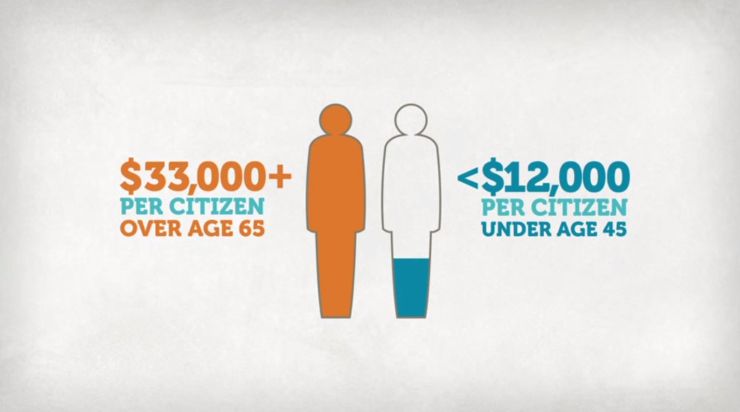Young people don’t vote. So party policies don’t target them. So they feel ignored and disenfranchised. So they don’t vote. Repeat.

The tale of low youth voter turnout is by now well known.
But a new study from Generation Squeeze, a national lobby that advocates for Canadians in their 20s to 40s, translates the implications of that disengagement into hard cash. And it isn’t pretty.
For every new dollar the national parties will invest in each retiree by 2019-20, investments for each person under age 45 total:
- 18 cents from the Conservatives
- 27 cents from the NDP
- 28 cents from Liberals
- 34 cents from the Greens
But that generational inequity isn’t new, says Generation Squeeze founder and University of British Columbia professor Paul Kershaw.
“The largest amount of money the federal government is spending each year is on income security in retirement. It adds up to $142 billion a year,” he said.
“By comparison, the federal government spends $10 billion on education, $7 billion on housing, $23 billion on families with kids.
“So the things that younger Canadians rely on disproportionately are mouse-sized investments compared to the elephant-sized investment in income security and retirement at the federal level.”
Kershaw believes younger Canadians wield less influence in politics because they fail to show up to vote. So politicians tend to be less inclined to work to earn their vote with pricey promises.
WATCH: The youth vote could be a game changer in this federal election. In the 2011 federal election, turnout for voters between the ages of 18 to 24 was less than 39 per cent. Elections Canada is trying to change that. Laura Stone reports.
Kershaw also thinks the current political narrative is based on problems that existed in the late 70s, when one in three seniors were poor. Now, Kershaw explains, seniors report the lowest rate of low income status of any age group in the country. Younger Canadians are the ones with economic vulnerabilities now.
They also have higher unemployment rates.
According to his research, young adults earn thousands of dollars less for full-time work than previous generations once you adjust for inflation, even though they’re more educated. They also face larger student debt and greater housing prices than their parents or grandparents did.
READ MORE: Home ownership for millennials – are they dreaming?
He says if government just spent $1,000 more per person under 45 (bumping the total up to $5,350) and “pooled that extra money for expensive moments like when they’re finishing their post secondary or starting their families,” big change could happen.
“We could reduce by years the time it takes to save for a down-payment on a home, reduce the years it takes to pay off the average student debt, make it more affordable to start a family … these are things that are within our grasp.”
Kershaw wants parties to break down their promises by age group. It’s a measure he feels would make them more accountable.
“We need to make sure Canada works for all generations, not just for an aging population.”
You can read the full Generation Squeeze report below.





Comments